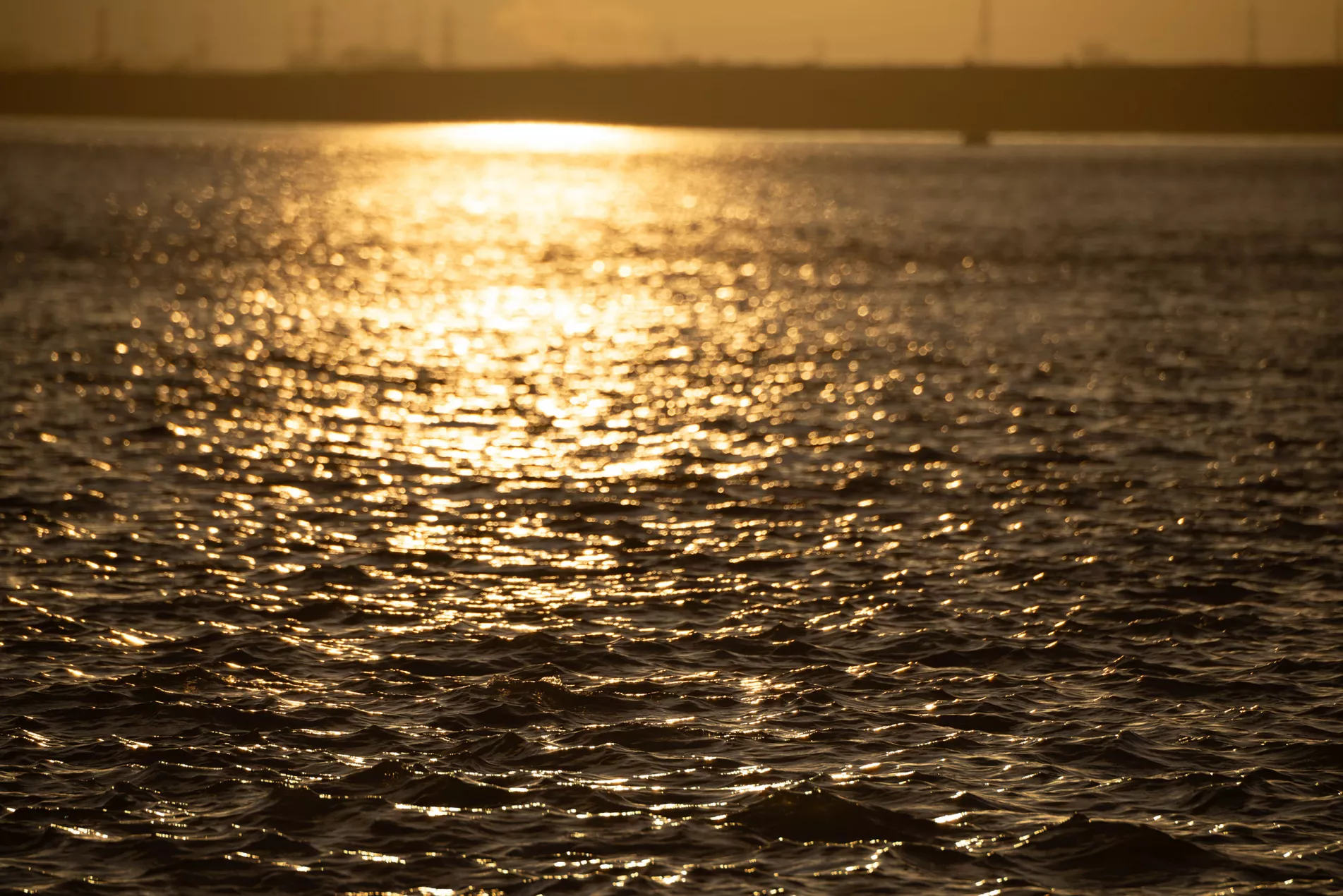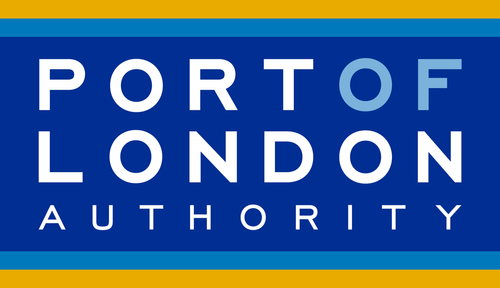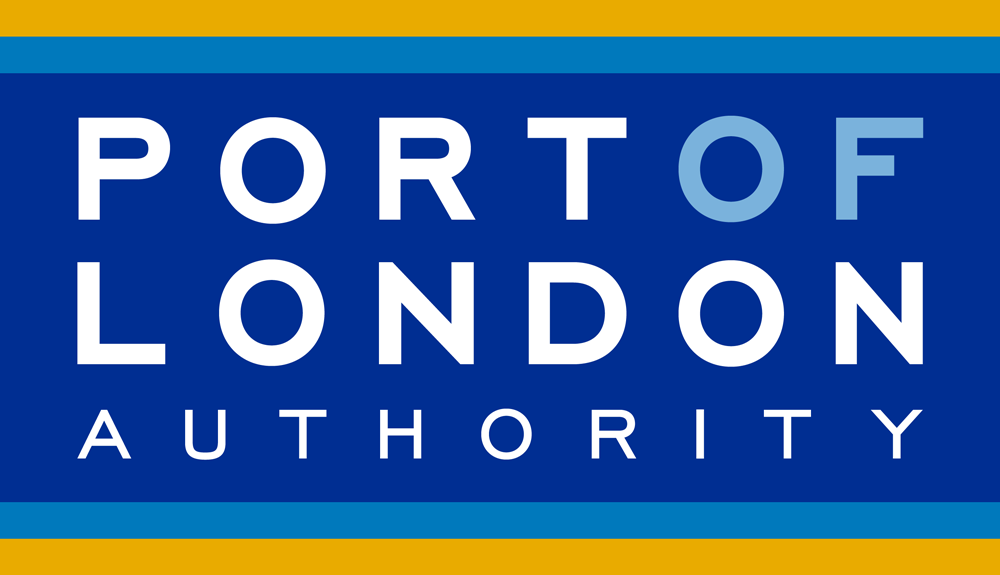Live Tides
NOTICES TO MARINERS
Charts & Surveys
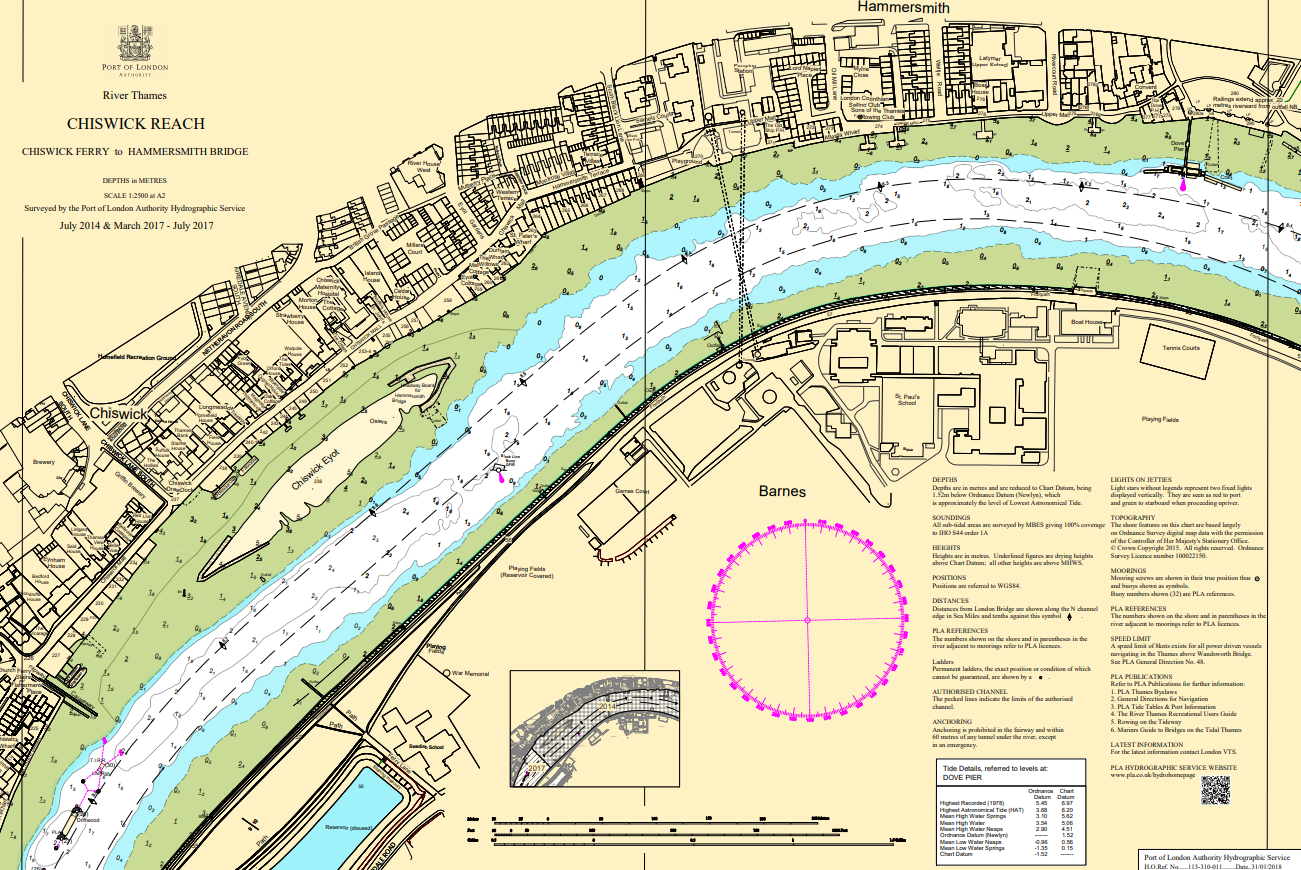
Incident reporting
Life-threatening emergencies on the river:
Call 999 and ask for the Coastguard
For near miss, safety observations and incident reporting click below
Countdown to the UK ports event of the year
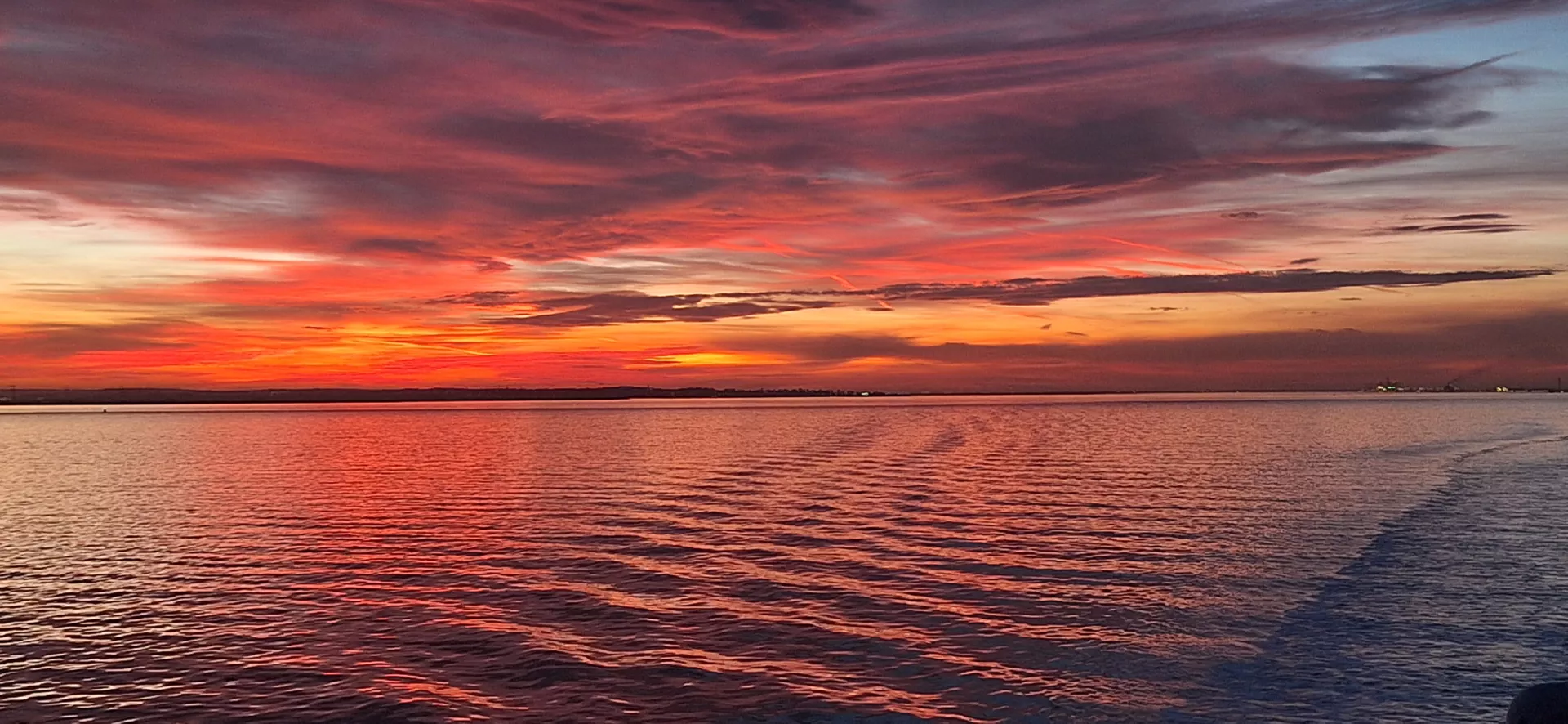
The last few tickets for Navigating the Future, the British Port Association (BPA) 2023 annual conference (17 -19 October), to be hosted by the Port of London Authority (PLA) near Tower Bridge, are selling fast.
Staged in partnership with DP World and Gallagher, the event features a global line-up of expert speakers, discussing issues affecting the ports sector, from Net Zero and fuels transition, to artificial intelligence and innovation.
The key note speech (19 October) will be delivered by Lord Deben, chair of the Climate Change Committee.
Richard Ballantyne, BPA Chief Executive, said: “To avoid missing out on the UK ports sector’s event of the year, we’d advise that you book now!”
PLA Director of Corporate Affairs, Siân Foster, added: “Alongside an amazing group of speakers leading discussion on key developments and opportunities facing the ports sector, there’s an unmissable programme of social events and networking opportunities. Don’t leave it too late to book your place!’’
A sold-out exhibitors’ area will also showcase the latest products and services shaping the future of the sector, including Insight Hubs, a programme of talks and demonstrations, giving delegates the chance to explore their offerings in more detail.
Highlights of the programme include:
- A welcome reception and river cruise through central London, aboard the Silver Sturgeon (17 October), supported by Smart Pension
- A roof-top party at Sky Garden, offering stunning use of the capital’s nightscape (18 October), sponsored by Gallagher
- A gala dinner featuring the BPA Awards, supported by DP World (19 October).
- Optional river tour of the ports at Tilbury and London Gateway (20 October).
Related content
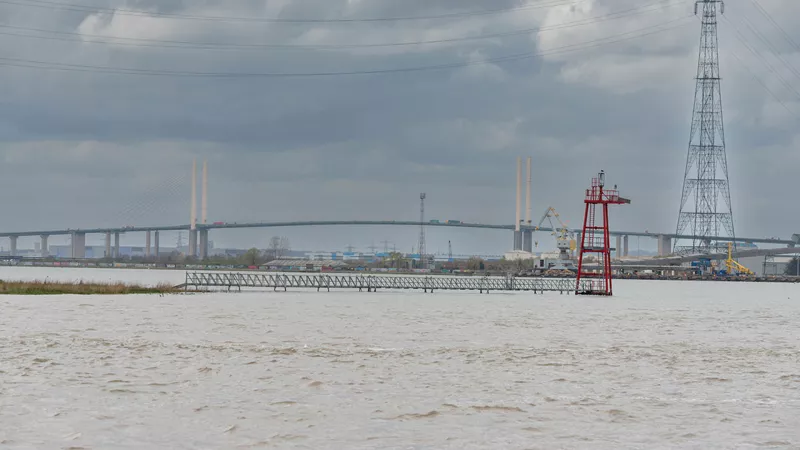

Location: London/Gravesend Remuneration: £28,971 per annum for a commitment of up to 24 days per...
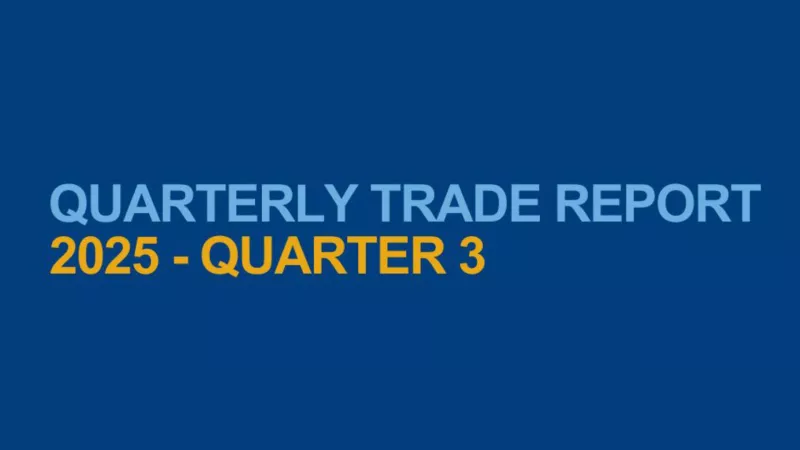
The UK’s largest port appoints its new chief harbour master
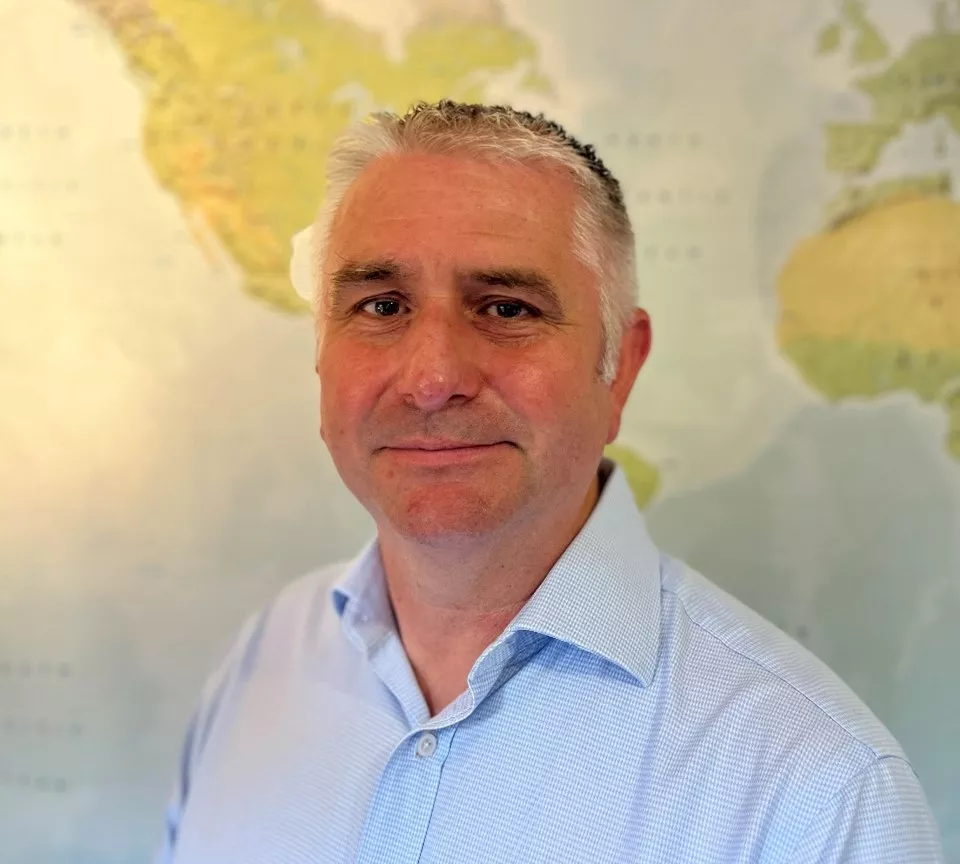
The Port of London Authority (PLA) has appointed James Stride as new chief harbour master, following the announcement of Bob Baker’s retirement.
Bringing a huge amount of maritime experience to the role, James Stride will take up the role in November 2023. He is currently Vice President of Maritime Governance at Carnival UK, having previously served for 20 years in the Royal Navy. As well as holding command of HMS Duncan, James has held relevant roles as a qualified navigator and hydrographic surveyor.
As chief harbour master, James Stride will report to PLA’s chief executive, Robin Mortimer, and he will be a member of Executive Committee (ExCo) and of the PLA board. He will lead the Harbour Master team in delivering their responsibilities for operational and navigational matters including vessel traffic management, pilotage, harbour services and safety and security within the Port of London.
Robin Mortimer, PLA’s chief executive, said: “We’re delighted to welcome James Stride to the PLA, bringing valuable experience and expertise to this pivotal role within the UK’s busiest port as we implement our Thames Vision 2050 strategy and work towards making London a world-leading Net Zero trading hub, at the forefront of global port innovation.”
James Stride will officially commence his role on 6 November 2023.
Related content


Location: London/Gravesend Remuneration: £28,971 per annum for a commitment of up to 24 days per...

Keeping it in the family
Joe Lukes

On the eve of London International Shipping Week (11-15 September), Joe Lukes, the latest generation of a Kent family with a long history of working on the capital’s river, describes it as “the best job in the world.”
In the blood

“The tidal Thames is a massive part of my life.
“Working on the river was all my dad ever did.
“It’s all I wanted to do growing up."
Starting out
“One of my earliest memories of the river is going to work with Dad, back when it was allowed.
“I was around six or seven years old.
“We used to board the tugs at Royal Terrace Pier in Gravesend, the town where I was born and bred.
“I remember being terrified of the gaps between the planks of the pier."
Ties that bind
“My family’s links with the river span five generations.
“My great, great grandad worked on the Anglia, the vessel that towed Cleopatra’s Needle up the Thames.
“My great grandad helped save lives during the evacuation of Allied forces from Dunkirk in World War Two."
Career path
“I have worked for the global towage company, Svitzer, for 12 years now.
“The river has always been the focus of my work.
“My first job after leaving school was working on a small survey boat.
“It gave me a good foundation.
“Getting onto the tugs was always the end goal, but with my family’s history, expectations were high.
“In the first year of my four-year apprenticeship with Svitzer I qualified as a deckhand, gaining my mates qualification 12 months later.
"Aged 27, I became a skipper, one of the youngest at Svitzer, at that time.
“We refer to it as ‘dead man’s shoes’, as there are ten tugs and 21 skippers, so you are waiting for people to retire to move up."
Life afloat; the ups…
“No two days are the same on the river.
“We’re much busier in the winter - there’s a bit of respite in the summer.
“The best part of the job is the challenge of towing vessels.
“A lot of our jobs are at London Gateway, manoeuvring 400m box boats, which is always good fun.
“I prefer doing the smaller ships, as there is more skill involved. They are more delicate.
“Escorting navy ships going through Tower Bridge is always great too, with people hanging out the windows to wave at us.
“I like the upper river too, but we don’t get up there that often.
“I also really enjoy going into Tilbury.
“I have worked in Sweden, Scotland, Wales and most ports in the UK.
"Naturally, London remains my favourite.”
…and downs.
“The downside is having an irregular sleep pattern.
“Our rota system involves seven days on, with five of them on the river, then seven days off.
“A good day is a night in bed!”
Union man
“I also followed my dad into becoming a union rep.
“Despite witnessing the work and stress he brought home, I felt the challenge of future proofing the job was a big enough draw to take on the role as union rep.
“My responsibilities as a union rep include attending meetings, representing staff in pay negotiations, disciplinary hearings, and just general queries.
“It’s good for staff to have someone they can feel comfortable talking to.
“We also have quite a young branch with 150 members, so it’s easier for the organisation to communicate via one channel.”
Future goals
“I want to become as good as I can be.
“I want people to feel safe when they’re on board and teach them.
“I want to do more training.
"I do enjoy being the union rep, so I want to continue that too."
Changing times
“During my time the safety culture on the Thames has improved, both within Svitzer and across all river operations.
“Technology has also improved the tugs’ capabilities and is reducing the element of surprise.”
Top tip
“My advice to anyone thinking of a career on the tugs would be just try it!
“As my grandad told me, you will be there three months or 30 years.
“It isn’t for everybody, but I think it’s the best job in the world.
“Towing ships at 3am sounds awful, but watching the sun rise makes it worth it.”
Quick fire
- Hobbies? Spending time with my family, Charlton FC, boxing and playing golf.
- Hero? My Dad. He achieved everything I want to achieve. “He’s the better tug captain, but give me time…"
- Best place on the river to eat or drink? The Trafalgar in Greenwich.
Related content


Location: London/Gravesend Remuneration: £28,971 per annum for a commitment of up to 24 days per...

Safety prosecution of Thames passenger boat Master
Enforcement of navigational safety on the tidal Thames by the Port of London Authority (PLA) has resulted in the prosecution of the Master of one of two passenger boat vessels involved in a collision on the river last December.
Yesterday (29 August 2023), Westminster Magistrates Court ordered Stuart McKenna to pay a fine and costs totalling £3,400 for his role in the incident, which saw the vessel he was in charge of, the Millennium of London, collide with the Pride of London, near Waterloo Bridge on 15 December 2022.
Mr McKenna pleaded guilty to the charge of navigating a vessel on the Thames in a manner liable to injure or endanger persons, or other vessels, etc, under section 108(b) of the Port of London Act 1968 (as Amended).
Sentencing, the judge commented on the “high culpability and high level of potential harm” posed by the standard of Mr McKenna’s navigation.
During the incident, a member of the bar staff on board the Pride of London suffered a minor injury. Both vessels were also damaged, the Pride of London more seriously than the Millennium of London.
PLA harbour master Adam Layer said: “This incident had every potential to be far more serious.
“The standard of Mr McKenna’s navigation of his vessel fell well below the standards we set, which are intentionally high.
“This prosecution demonstrates our commitment to navigational safety on the tidal Thames.
“We will continue to take action against Masters who fail to navigate with the required care and attention.”
The Millennium of London is owned by City Cruises. Adam Layer added: “I would like to thank City Cruises for their full co-operation with our investigation.”
Related content


Location: London/Gravesend Remuneration: £28,971 per annum for a commitment of up to 24 days per...

Smart Pension partners with Port of London Authority, host of BPA 2023
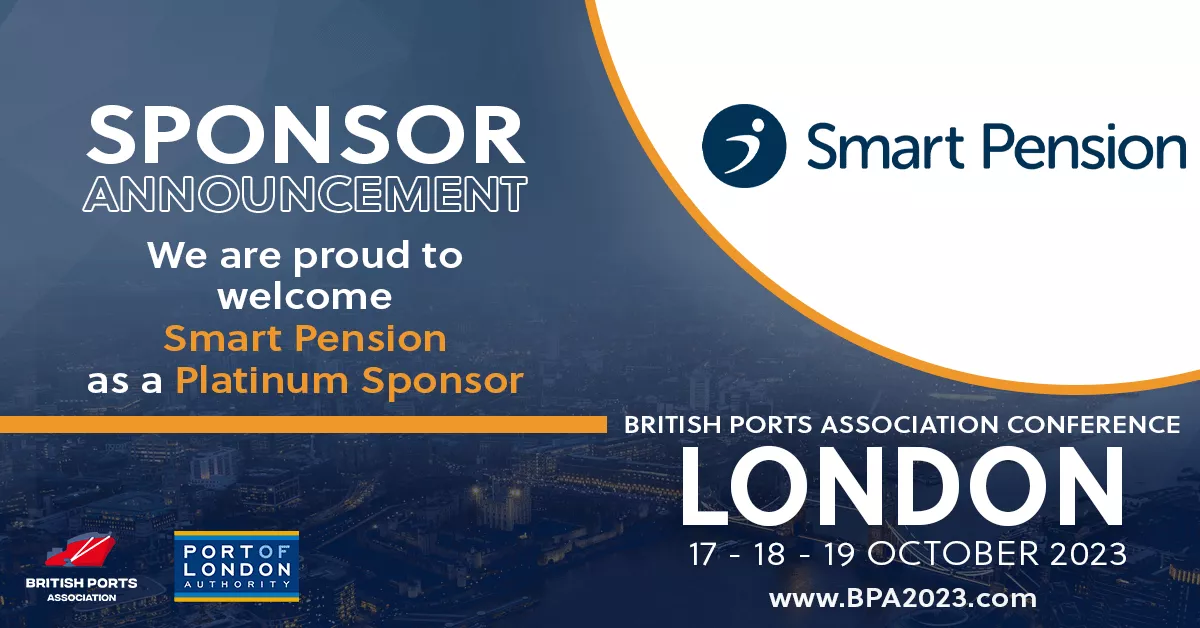
Smart Pension, one of the UK’s leading workplace pension providers, partners with Port of London Authority as sponsor for its British Ports Association annual conference 2023.
This partnership reflects Smart Pension’s continuing support for the UK maritime sector through its bespoke pension provision for the industry.
Smart Pension manages more than £4bn in assets on behalf of more than one million UK savers and provides pensions to over 70,000 employers. Smart Pension’s members benefit from a more sustainable investment approach and a real-time pension they can access anywhere via a mobile app, powered by Smart’s multi award-winning technology platform Keystone.
The BPA 2023 conference, hosted by the PLA and co-sponsored by Smart Pension, provides a two-day platform for port members, associates, government officials, regulators, and international maritime representatives to participate in enlightening panel discussions, keynote speeches, and expert presentations. The conference will begin on 17 October, for two days and will take place at the Leonardo Royal London Tower Bridge.
Adam Tudor, Head of Business Development at Smart Pension, said: “We are delighted to be partnering with the Port of London Authority to sponsor the British Ports Association’s annual conference. We continue to deliver all the benefits of our ground-breaking workplace pension, which include digital efficiency, our financial wellbeing offering and great customer experience for the maritime sector . This means a better value and experience for the sector’s members and efficiencies for employers in running their workplace pension scheme. We look forward to sharing more about our work in the sector in October.”
The conference programme can be viewed at: https://www.bpa2023.com/programme/
About Smart Pension
Launched in 2015, the Smart Pension Master Trust has grown AUM by more than 2,000% in four years and now serves over one million members and more than 70,000 employers. It is powered by Keystone, Smart’s global savings and investments technology platform.
Aquiline Capital Partners, Chrysalis Investments, J.P. Morgan, the Link Group, Fidelity International Strategic Ventures, Barclays, DWS Group, Natixis Investment Managers and Legal & General Investment Management are all investors in Smart.
They tweet as @SmartPensionUK.
British Ports Association (BPA)
Established in 1992, the BPA has been the voice of the UK ports industry, representing their concerns and interests at all levels of governance.
The Port of London Authority (PLA)
Covering 95 miles of the tidal River Thames, the Port of London Authority (PLA) works to keep commercial and leisure users safe, protects and enhances the environment and promotes the use of the river for trade and travel. As a trust port, the PLA has no shareholders and operates for the benefit of customers and stakeholders, now and in the future.
Related content


Location: London/Gravesend Remuneration: £28,971 per annum for a commitment of up to 24 days per...

RightShip to sponsor of British Ports Association annual conference
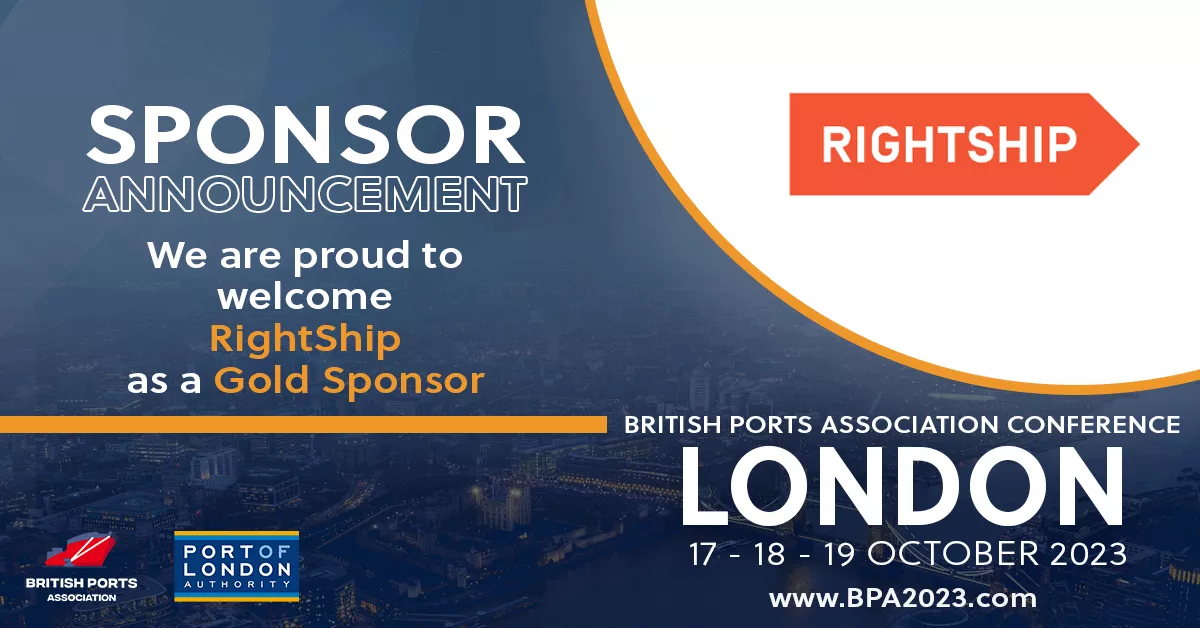
In a show of commitment to the continued growth and safety of the UK's maritime industry, RightShip is proud to sponsor the British Ports Association (BPA) 2023 Conference. (17-19 October)
The event, hosted by the Port of London Authority (PLA), is set to take place at the Leonardo Royal London Tower Bridge.
The maritime industry is a linchpin in the UK's economic framework, handling 95% of the country's international trade. This conference is a pivotal gathering, bringing together key players from across the maritime sector to discuss and strategise for the future of the industry.
With its deep maritime heritage combined with cutting-edge digital capabilities, RightShip offers a unique perspective. Their expansive data access, analytics and top-tier platform provide stakeholders across the maritime ecosystem with unparalleled insights. Their goal? A journey towards 'zero harm' in the maritime world.
Believing firmly in the power of collaboration, RightShip is dedicated to working alongside maritime businesses, associations, governments, and individuals who share their vision. They're also passionately committed to backing initiatives centred on emission reduction, decarbonisation, and enhancing air quality. By leveraging their extensive data, RightShip is at the forefront of change in these crucial areas, aiming for an industry that is safer, more sustainable, and constantly innovating.
The BPA 2023 Conference promises a rich array of activities: panel discussions, keynote speeches, expert presentations, and myriad networking opportunities. Attendees will include senior figures from the UK ports industry, government representatives, international maritime delegates, and regulators.
Key events during the conference include a Thames welcome reception, exclusive networking sessions and a grand gala dinner. A guided port tour of Tilbury and London Gateway will also conclude the conference.
For a deeper insight into RightShip's transformative initiatives and their impact on the maritime industry, visit their official website: https://rightship.com/
For more details on the BPA 2023 conference programme, visit https://www.bpa2023.com/programme/
About RightShip:
RightShip's vision is of a maritime industry that leads in innovative solutions for safety, sustainability, and crew welfare. With a rich maritime history and modern digital capabilities, they're steering the industry towards a future that's safer, more sustainable, and greener.
British Ports Association (BPA):
Established in 1992, the BPA has been the voice of the UK ports industry, representing their concerns and interests at all levels of governance.
The Port of London Authority (PLA)
Covering 95 miles of the tidal River Thames, the Port of London Authority (PLA) works to keep commercial and leisure users safe, protects and enhances the environment and promotes the use of the river for trade and travel. As a trust port, the PLA has no shareholders and operates for the benefit of customers and stakeholders, now and in the future.
Related content


Location: London/Gravesend Remuneration: £28,971 per annum for a commitment of up to 24 days per...

London piers guidance for a greener logistics future

Recommendations for the use of electric cargo (e-cargo) bikes on and near Thames-side piers in London, aimed at maximising post-pandemic opportunities to carry more light freight on the river, are highlighted in new guidance.
A report by marine consulting engineers Beckett Rankine, published jointly by the Port of London Authority (PLA), Cross River Partnership (CRP) and Transport for London (TfL), details a best-practice approach to marine and landside infrastructure, to help meet growing demand to transport more small goods and parcels into the capital by river, rather than by road.
London’s Deputy Mayor for Transport, Seb Dance, said: “The Mayor is committed to reducing carbon emissions, to cleaning up the capital’s filthy air and helping London become a Net Zero city by 2030.
“Moving more light freight off the road and onto the Thames will not only cut emissions, it will enable businesses to benefit from the reliability of river deliveries. This new guidance will help to tap into the potential of the River Thames, recommending best practice for the use of e-cargo bikes on and near Thames-side piers in London. This supports the Mayor’s aim of building a greener, more prosperous London for everyone.”
James Trimmer, the PLA’s director of planning and development, said: “Good planning is essential to optimising carbon reduction and air quality improvements, linked to increasing use of the river for freight in the capital, in line with the goals of the Thames Vision 2050, which we published last year.
“To move forward with confidence, we first need to agree an operating regime, including common standards for training. This will require the input of all those involved, including pier owners, vessel operators and the companies taking goods onwards from the river to their final destination, increasingly by e-cargo bikes.
“This guidance is a major step forward towards achieving that goal.”
Alina Tuerk, TfL's head of roads and freight strategy and planning said: "We are determined to provide a healthy and sustainable future for all Londoners. Carrying more light freight on the river can play a vital role in cutting carbon emissions, air pollution, and road danger. This design guidance for London’s piers is well-aligned with our recently launched Cargo Bike Action Plan.
“We are also in the process of reviewing our constructor’s guide to cargo bikes and expanding it to include guidance for other sectors beyond construction. We will continue to work closely with our industry partners, businesses, and boroughs across the capital to ensure a greener freight and servicing future."
Beckett Rankine senior engineer, Graham Gathergood, one of the report’s authors, said: “As the leading designer of passenger piers on the tidal Thames, Beckett Rankine was delighted to be asked to assist the PLA, CRP and TfL in producing this guidance document on designing piers for light freight.
“Light freight transport by river is a rapidly expanding industry and, until now, there has been no design guidance on how to accommodate e-cargo bikes on floating piers.
“This report details trials carried out with a range of e-cargo bikes on a variety of piers and sets out the requirements for the safe operation of the bikes alongside pedestrians.
“In addition to showing how existing piers can be adapted for e-cargo bikes, the guidance will also be useful for designers of new piers on the tidal Thames.”
Fiona Coull, CRP senior programme manager, said: “We’re pleased to publish this guidance document to encourage more light freight on the river supported by low-emission, last-mile deliveries.
“Complementing CRP’s work across river, road and rail, we hope this report will provide opportunities to develop landside infrastructure to deliver freight directly into the capital in a more sustainable way.”
Read the design guidance (PDF)
Related content


Location: London/Gravesend Remuneration: £28,971 per annum for a commitment of up to 24 days per...

A fond farewell
Debbie Leach
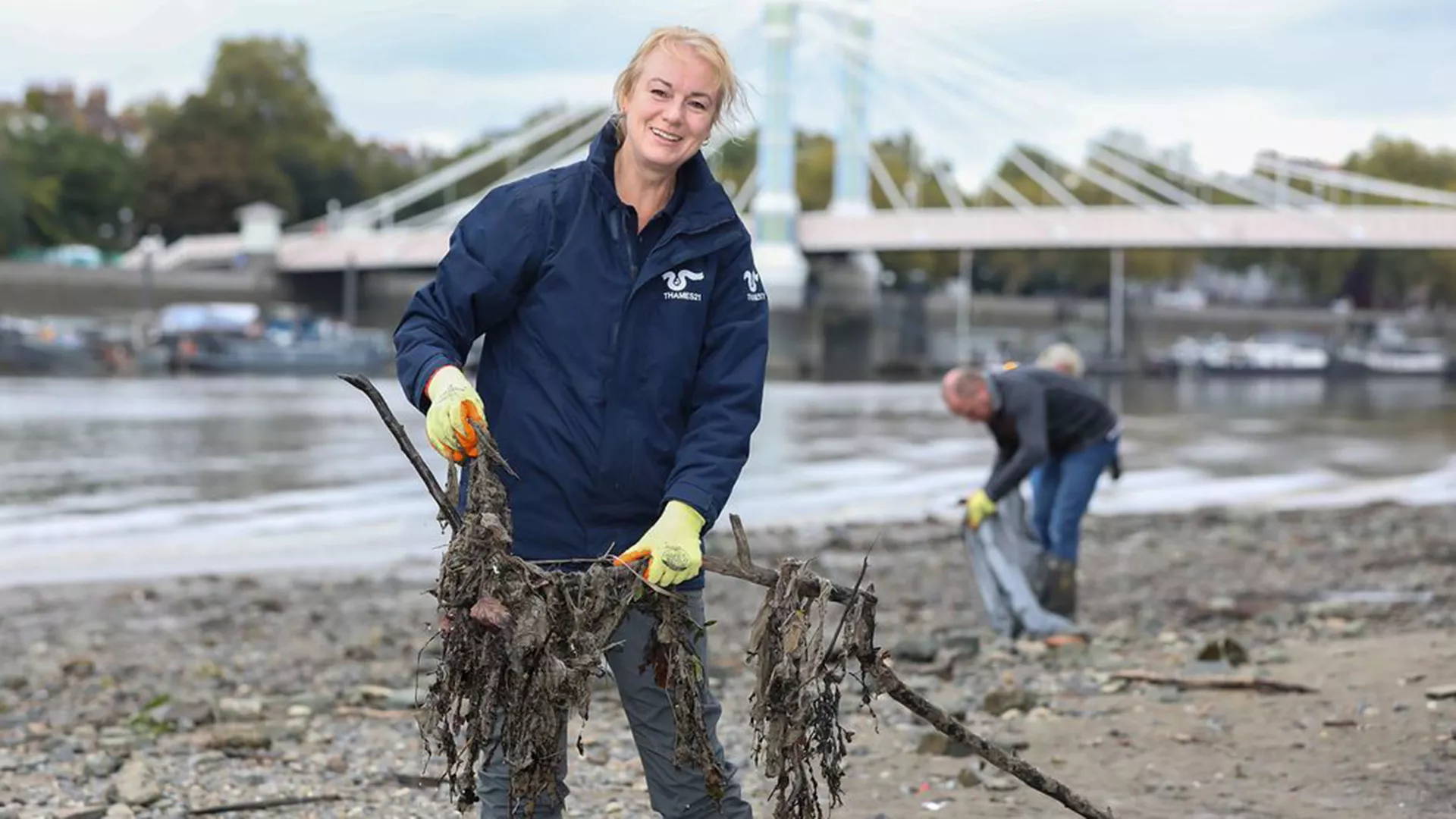
After almost two decades at the helm of Thames21, Debbie Leach is heading to Devon for a new challenge, but London’s river will always have a special place in her heart.
Lasting memories
“Leaving Thames21 is a great wrench!
“The charity has been the focus of my waking life since 2005. It will be difficult to leave it behind.
“Unsurprisingly, what I will remember about the last 18 years are the capital’s rivers and the people we have gathered together to stand up for them. Two individuals who particularly inspired me were the charity’s founder Celia Hensman, and Michael Hamilton, who steered the charity through the pandemic as Chairman.
“Both are sadly no longer with us, but their strengths and values are still to be seen in everything that Thames21 achieves and does.”
The mother of all rivers
“London’s greatest river, of course, is the Thames.
“But all its tributaries bring focus to the landscape too, raising our spirits and gathering wildlife and nature around them.”
Making connections
“I joined Thames21 back in May 2005, because it struck me as charity that had not only identified serious environmental problems facing a river I knew and loved as a keen rower, but also practical solutions.
“I also felt that the organisation had huge potential to harness the power of rivers to reach out to and connect people across generations and cultural backgrounds.
“It’s been my good fortune to work with dedicated, highly skilled people, all with a mutual understanding of the essential nature of rivers; people pooling their diverse skills towards a shared enthusiasm.”
Changing times
“Both the charity and the river have changed massively since 2005.
“Back then, Thames21 was a fairly small group, mainly focused on tackling the issue of urban rubbish clogging the tidal Thames and canal network in London through volunteer clean-up events.
“Thames21’s work has now evolved to also deliver sophisticated water quality monitoring, evidencing and practical river improvement solutions, hand in hand with communities, as well as public and private sector partners.
“Via the T21 River Action Groups, for example, we train and support local people to deliver their own river improvement activity across a wide area.
“Now, Thames21 works on improving the wider health and sustainability of the river through a range of technical specialisms, from river restoration, to providing evidence of river pollution issues and the effectiveness of nature-based solutions to tackle them.
“The charity’s employees now total 47, but still maintain a strong team ethos.
“The board is also becoming more representative of the diverse communities we serve.
We are also increasingly using the evidence the charity collects on the issues affecting the river to press for effective long-term government action.”
Progress to be proud of
“The river has also changed greatly too over the last twenty years.
“In 2005, the Thames foreshore was a general dump for rubbish, that had been built up, literally over centuries.
“Today, much of it has gone for good, thanks to thousands of Thames21 volunteers, clearing away litter and debris of all shapes and sizes from supermarket trollies and bikes, to cotton buds and crisp bags.
“The foreshore at the Isle of Dogs, for example, used to be carpeted by single-use carrier bags.
"Today, it has been transformed, thanks to Thames21 volunteers, removing the bags, year after year.
“The PLA’s Michael Russell and the Driftwood crew have provided amazing practical support for the river clean-ups – it is such a great partnership.
“We also campaigned hard with other NGOs for the introduction of a charge for single-use carrier bags, which has made a big difference.
“The photographs showing the change over time are striking.”
Plastic peril
“Unfortunately, other aspects of the river have changed for the worse.
“Single-use plastic has exploded as part of our daily lives and much of it is finding its way into nature along river systems.
“Wet wipes through sewage overflows, food wrappers, plastic drink bottles and a host of other items are accumulating in the river faster than Thames21’s volunteers can clear them.
“Other river pollution, whether it is oils and heavy metals, or increasingly heavy traffic and sewage overflows have also worsened.”
Solutions
“Happily, the levels of sewage pollution in the tidal Thames will reduce hugely with completion of the Thames Tideway Tunnel, due in 2025.
“It will make a huge difference to the health of the tidal Thames, supporting its wildlife and ecology and making it a vibrant resource for people too.
“I am proud that Thames21 chaired a coalition of NGOs that supported the project from the outset.
“Initially, the project provoked much controversy at local community level.
“I am reliably informed that Thames21 provided decision-makers with the confidence to go ahead with the project.
“Thames21 is now producing baseline surveys and will help evidence the impact of the ‘super sewer’ Thames Tideway Tunnel, by measuring the remaining levels of sewage related litter in the river.
"The need for litter picks - to survey, monitor and clear away rubbish in the river - will continue.”
Blown away
“Increasingly, the most common items of litter found now in the river relate to on-the-go food.
“It is not there because it has been flushed down the loo. It has been dropped in our streets, along our riversides, or come from overflowing rubbish bins.
“Thames21 will, I know. continue to monitor this issue and press for change as a matter of urgency.”
24-hour prime minster
“If I were in charge of the government for a day, I’d be so busy.
“I would enforce, strengthen, and where necessary bring in new legislation to make it standard for all engineering works in our cities to reduce significantly the extent to which the urban ground that they are working on has been ‘water-proofed’.
“At present, the spread of hard surfaces in our towns prevents rainwater from soaking away naturally.
“Instead, it flows along hard surfaces into our already overstretched drains, flooding communities and overwhelming our river network with sewage and other pollution.
“Current initiatives to address this don’t go far enough. It’s all too tentative.
“Our cityscapes should become filled with rain gardens, roadside green spaces and planting and pocket parks which are places that rainwater can go to soak safely away, instead of affecting our rivers and communities.”
Next challenge
“As chief executive of the Dartmoor Pony Heritage Trust, I’m really looking forward to getting involved in critical land management and conservation issues, as well as climate change, the greatest challenge of our generation.
“The embodiment of Dartmoor for many, the ponies have reduced in number from over 30,000 in the 1950s to just a couple of thousand at most.
“Dartmoor and our other great moors act as hugely important ‘carbon sinks’ for the UK, sucking CO2 out of the atmosphere.
“Our moors are also crucial wild places for nature and for some of our most endangered species. Heathland is also one of the rarest habitats in Europe.
“All this means that future land management plans must be developed carefully and intelligently.”
A safe pair of hands
“Chris Coode, my successor, and former deputy at Thames21, has an exciting, testing and rewarding time ahead of him.
“The experience he has gained at the charity for many years will stand him in very good stead.
“I have full confidence that Chris and the team have all the skills, dedication and motivation to take Thames21 from strength to strength in the years ahead.”
Quick fire
- Other hobbies? Dragon-boating, sailing, gardening, hiking
- The river in three words? Charismatic, ever-changing, inspirational.
- Best Thames watering hole and favourite view of the river? The Dove at Hammersmith. I can’t give a favourite Thames view, it feels too much like choosing a favourite child!
Related content


Location: London/Gravesend Remuneration: £28,971 per annum for a commitment of up to 24 days per...

Businesses back life-saving Thames training course

Staff from riverside businesses have been signing up for a water safety course, equipping them with the skills to prevent drownings on the tidal Thames, stretching 95 miles from Teddington in west London to the North Sea.
Barking Riverside Limited (BRL), master developers of a project turning 443 acres of former industrial, riverside land in east London into a vibrant neighbourhood, and marine consulting engineers Beckett Rankine, are among the latest companies to have enrolled staff on to the Riverside Personal Safety Course, held twice a month at the London Aquatic Centre in the Queen Elizabeth Park, Stratford.
Employees from both firms have contributed to a new film, explaining how useful they found taking part in the course.
In the film, Beckett Rankine’s Matthew Jennings describes the course as “brilliant”, with Barking Riverside’s Ken Webster hailing it as “a must” for anyone working on the river, as well as members of the public.
In partnership with River Thames employers, the award-wining training course was developed by the Thames Skills Academy (TSA), working with training provider SeaRegs, the Port of London Authority (PLA), Transport for London and Tideway.
Since the course was launched, over 1,500 participants have learnt about the dangers of the Thames and the importance of deploying life-saving equipment correctly, including ensuring that life jackets are in date and are fitted properly.
Katherine Riggs, chief executive of the TSA, said: “Each year, of the 100 people who get into trouble in the waters of the tidal Thames, half are in the river unintentionally.
“With one in three people unable to swim, it’s vital that we widen the network of people living and working along the Thames through London to the coast, who are able to look after themselves in and around the river and help others who may find themselves caught out by its strong tides and currents.”
Lucy Owen, the PLA’s deputy director of planning & development, commended BRL for becoming the first riverside development company to support the course. She said: “It’s great to see BRL blazing a trail by sending their staff on the Riverside Personal Safety Course.
“Growing riverside development makes it imperative for all companies involved to ensure that their workforce and customers, along with the public at large, know how to look after themselves and others on the river.”
Katherine Riggs, added: “We hope the course will be the new norm for all those involved with the river, as workers, landowners or residents, and encourage all riverside businesses to make it a part of their staff training.”
The next courses are scheduled for 4 and 5 September 2023. Places can be booked via the TSA website.
Watch: Life-saving training course
Related content


Location: London/Gravesend Remuneration: £28,971 per annum for a commitment of up to 24 days per...

Insurance broker Gallagher joins forces with PLA to sponsor BPA 2023
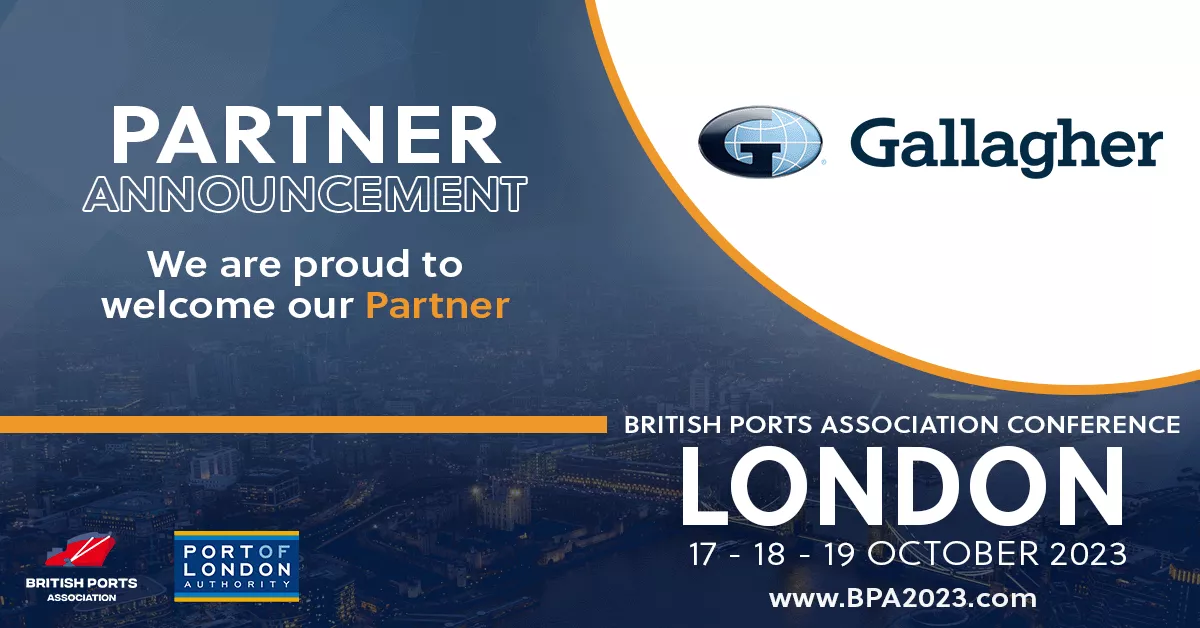
Highlighting the strategic significance of the UK's maritime industry, Gallagher, one of the world’s largest insurance brokers, is partnering with the Port of London Authority (PLA), host of the 2023 British Ports Association (BPA) Annual Conference (17 – 19 October).
This collaboration signifies the commitment of key stakeholders in bolstering the UK ports industry.
The conference will take place at the Leonardo Royal London Tower Bridge.
It serves as a testament to the pivotal role the UK ports industry holds in the national economy, handling 95% of the country's international trade and enabling 25 million international passenger journeys annually.
As a prominent insurance broker in the maritime sector, Gallagher provides the industry with stability and resilience through its comprehensive range of risk management and insurance services. Boasting a rich heritage since 1927 and operating across 130 countries, Gallagher employs over 48,000 risk professionals. The firm’s prowess in risk identification, assessment, and mitigation has played a crucial role in supporting the burgeoning growth of UK ports.
The partnership between Gallagher and the PLA underscores the self-sustaining investments UK ports undertake to enhance facilities and meet the soaring demands in offshore energy, container, and Ro/Ro sectors. This initiative is paramount in maintaining the UK economy’s international competitiveness.
The event will convene port members, associates, and a diverse array of international maritime representatives for an invigorating two-day program featuring panel discussions, keynote speeches, expert presentations, and networking events.
Senior executives from the UK ports industry will be in attendance, alongside representatives from maritime businesses, government departments, regulators, and international maritime delegates.
The conference also offers a line-up of engaging networking opportunities, including a welcome reception on the Thames on Tuesday, a Party in the Sky presented by Gallagher on the Wednesday, and a celebratory gala dinner on the Thursday. A guided port tour of Tilbury and London Gateway will round off the event on the Friday.
For an in-depth insight into Gallagher’s contributions to the UK maritime industry, please see the firm’s website. (https://www.ajg.com/gallagher-specialty/industries/maritime-logistics/)
The full conference program is available at https://www.bpa2023.com/programme/
-----
British Ports Association (BPA): Established in 1992, the BPA serves as the voice of the ports industry in the UK, advocating on behalf of its 100 full members and numerous associate members to the UK and devolved governments, the EU, and national and international bodies.
Port of London Authority (PLA): Steward of 95 miles of the tidal River Thames, the PLA is committed to promoting the river's safe and sustainable use for trade and leisure.
Gallagher: Founded by Arthur J. Gallagher in Chicago in 1927, Gallagher has grown to be a leading provider of insurance, reinsurance, risk management and consulting services in the world. Gallagher is a purpose-driven organisation, which means it translates its vision into action to achieve something for the greater good. The firm partners with businesses across countries and international territories to support the ever-changing needs of clients and provide relevant and impactful professional advice.
Related content


Location: London/Gravesend Remuneration: £28,971 per annum for a commitment of up to 24 days per...

Discover
